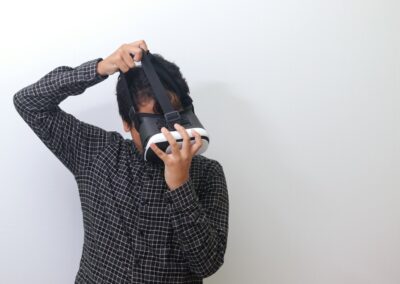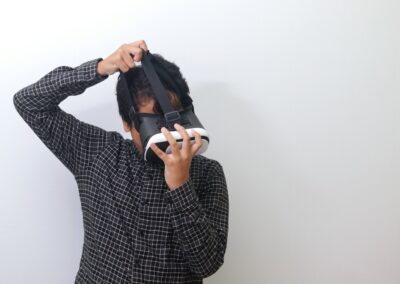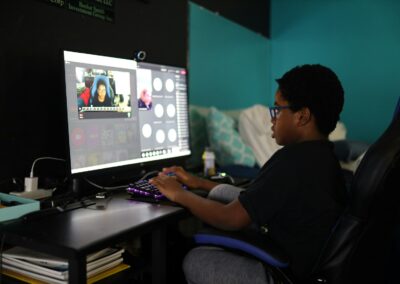The Rise of Virtual Reality in Social Networking
Transforming Social Interactions with VR
VR social networks are revolutionizing the way people connect and interact, creating immersive virtual communities centered around shared interests and activities. By leveraging the power of Virtual Reality (VR), these platforms offer users a more engaging and interactive social experience compared to traditional social media. This transformation is particularly evident in tech-forward regions like Saudi Arabia and the UAE, where innovation in digital technologies is rapidly progressing.
In cities like Riyadh and Dubai, VR social networks are gaining traction as they provide users with a sense of presence and immersion that traditional platforms cannot match. Users can create avatars, explore virtual environments, and engage in real-time interactions with others, fostering a deeper sense of community and belonging. This immersive social interaction is crucial for forming meaningful connections and enhancing user engagement.
The impact of VR social networks extends beyond personal interactions. For businesses and entrepreneurs in Saudi Arabia and the UAE, these platforms offer new opportunities for networking, collaboration, and brand engagement. By creating virtual spaces for events, meetings, and collaborations, VR social networks enable businesses to reach a global audience and foster a sense of community among their stakeholders.
Building Virtual Communities Around Shared Interests
One of the key advantages of VR social networks is their ability to bring people together around shared interests and activities. These platforms enable users to join virtual communities based on common hobbies, passions, and professional pursuits. For instance, VR environments can host virtual book clubs, gaming groups, fitness classes, and business networking events, providing a dynamic and interactive way for people to connect and engage with like-minded individuals.
In Saudi Arabia and the UAE, where cultural and social activities play a significant role in community building, VR social networks can enhance these interactions by offering new and innovative ways to participate in shared activities. For example, virtual reality can bring art enthusiasts together in a virtual gallery, allowing them to explore and discuss artworks in an immersive setting. Similarly, sports fans can gather in virtual stadiums to watch live events and share their excitement in real-time.
Moreover, VR social networks can support educational and professional development by providing virtual spaces for workshops, seminars, and training sessions. This approach is particularly beneficial in regions like Riyadh and Dubai, where there is a strong emphasis on continuous learning and professional growth. By leveraging VR technology, educational institutions and businesses can create engaging and interactive learning environments that cater to diverse needs and preferences.
Challenges and Future Directions in VR Social Networking
While VR social networks offer numerous benefits, their adoption and development come with certain challenges. One of the primary challenges is the accessibility of VR technology, as high-quality VR equipment can be expensive and may not be readily available to all users. Additionally, creating engaging and immersive VR content requires significant investment in technology and expertise, which can be a barrier for some developers and businesses.
In Saudi Arabia and the UAE, addressing these challenges involves investing in the development of affordable and accessible VR solutions. By fostering partnerships between technology providers, educational institutions, and businesses, these regions can drive innovation and make VR social networks more accessible to a broader audience. Additionally, providing training and resources for VR content creation can help overcome technical barriers and enhance the quality of virtual experiences.
Looking ahead, the future of VR social networking holds exciting possibilities. Advances in VR technology, such as improved graphics, more intuitive interfaces, and greater affordability, will continue to enhance the user experience and expand the reach of VR social networks. As these platforms evolve, they will offer even more dynamic and immersive ways for people to connect and engage around shared interests and activities.
Strategic Approaches for Maximizing VR Social Networks
Investing in Technology and Content Development
To maximize the potential of VR social networks, businesses and developers must invest in both technology and content development. This includes acquiring high-quality VR hardware and software, as well as creating engaging and immersive content that resonates with users. In Riyadh and Dubai, where technological innovation is a priority, strategic investments in VR technology can enhance user experiences and drive the growth of virtual communities.
Collaborating with technology providers and content creators can also provide valuable insights and support in developing compelling VR experiences. By leveraging external expertise and resources, businesses can overcome technical challenges and create VR social networks that foster meaningful connections and engagement among users.
Understanding User Preferences and Trends
A critical aspect of leveraging VR social networks is understanding user preferences and trends. Conducting market research and gathering feedback from users can provide valuable information on what features and content are most effective in creating engaging virtual experiences. In Saudi Arabia and the UAE, where cultural and social dynamics play a significant role, tailoring VR social networks to reflect local contexts and preferences is essential for maximizing their impact.
By staying informed about emerging trends in VR technology and user behavior, businesses can adapt their VR social networks to meet the evolving needs and expectations of their audience. This proactive approach can enhance user satisfaction and foster long-term engagement with the platform.
Conclusion: Embracing the Future of Social Interactions with VR
VR social networks represent a transformative approach to social interactions, offering immersive and interactive experiences that foster virtual communities around shared interests and activities. By integrating VR technology into social networking, businesses and developers in Saudi Arabia, the UAE, and beyond can create engaging and dynamic platforms that resonate with modern users.
As VR technology continues to advance, embracing its potential and addressing implementation challenges will be crucial for achieving success in the field of VR social networking. Investing in technology, understanding user preferences, and fostering collaborations will enable businesses to harness the full power of VR and drive growth in the virtual social networking space. With strategic planning and a commitment to innovation, VR social networks can set new standards for social interactions and create vibrant virtual communities that connect people in meaningful ways.
—
#VRSocialNetworks #VirtualRealityCommunities #SharedInterestsInVR #VirtualCommunities #ModernTechnology #AI #Blockchain #TheMetaverse #ExecutiveCoaching #BusinessSuccess #LeadershipSkills #ProjectManagement #SaudiArabiaTech #UAETech #RiyadhInnovation #DubaiInnovation























